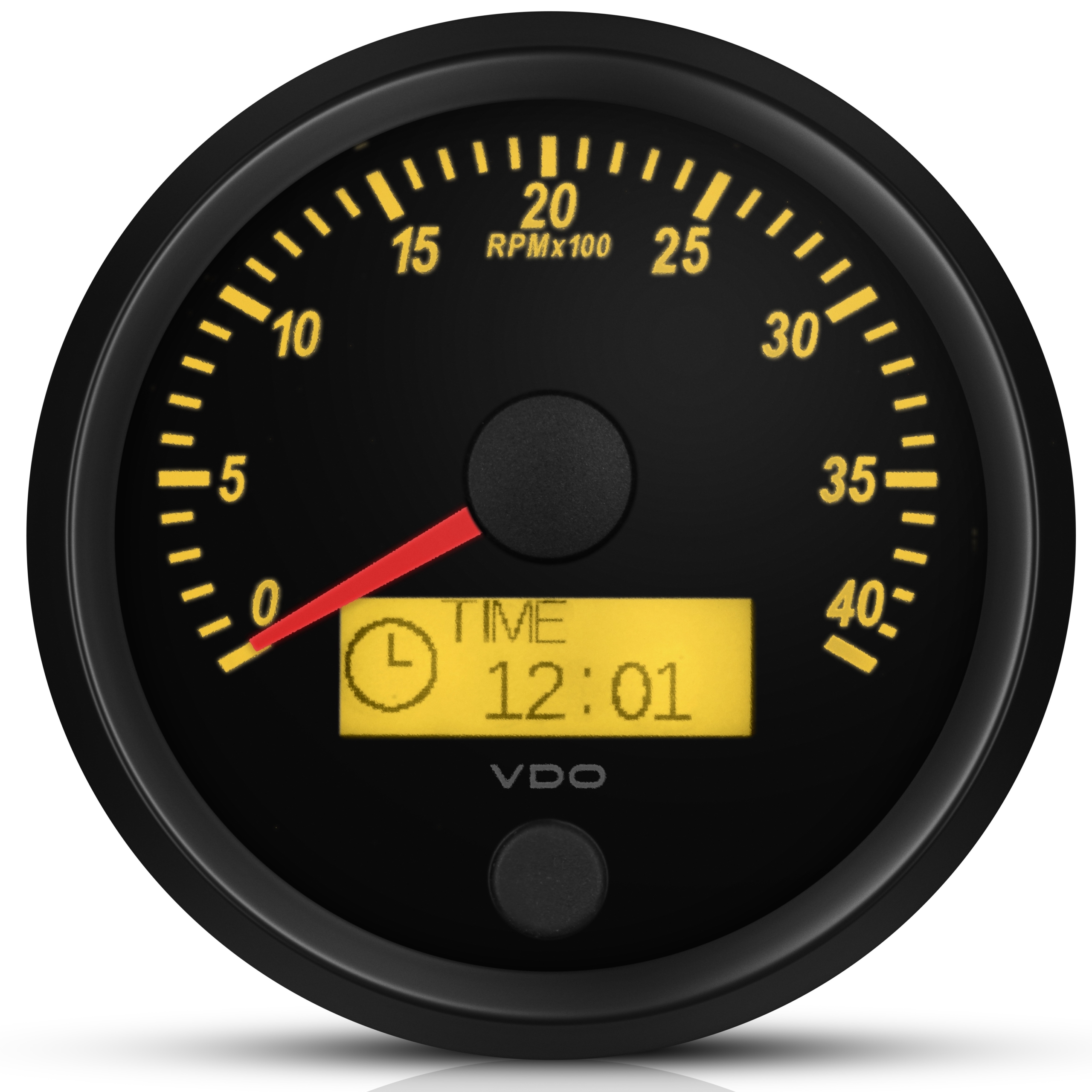Improve Your Driving Experience with a Reliable Tachometer
Improve Your Driving Experience with a Reliable Tachometer
Blog Article
Unlocking the Tricks of Tachometers: Everything You Need to Learn About This Essential Instrument in Your Automobile
Understanding the intricacies of tachometers can give valuable insights right into your car's performance and upkeep requirements. From gauging engine rate to figuring out the data it provides, tachometers function as a crucial tool for automobile owners and lovers alike. By deciphering the mysteries behind this essential tool, you can open a wide range of info that can enhance your driving experience and make certain the durability of your vehicle.
Relevance of Tachometers
The relevance of tachometers depends on their capacity to supply essential real-time information regarding an engine's rotational rate, enabling specific tracking and upkeep of machinery. By measuring the transformations per min (RPM) of an engine's crankshaft, tachometers use valuable understandings right into the engine's performance - tachometer. This information is crucial for making sure that the engine operates within its ideal array, preventing possible damage from over-revving or underperforming
Tachometers play an essential duty in helping drivers and technicians identify any kind of anomalies in the engine's rate, which can indicate problems such as gas inefficiency, mechanical issues, or too much strain on the engine. By immediately recognizing these issues with tachometer analyses, maintenance can be executed proactively, protecting against expensive repair work and downtime in the future.
In addition, tachometers are specifically vital in high-performance vehicles and machinery, where exact control over engine speed is essential for optimal operation. Racing cars and trucks, airplane, and commercial equipment rely upon tachometers to deliver peak performance while preserving security criteria. Fundamentally, tachometers are not just instruments for determining rate however crucial devices for making certain the smooth and efficient operation of engines across various applications.
How Tachometers Measure Engine Speed
Making use of sensing units that discover the frequency of electric pulses produced by the engine's ignition system, tachometers accurately gauge the rotational speed of an engine. By keeping track of the rate at which these pulses are obtained, tachometers offer real-time feedback on just how fast the engine's crankshaft is rotating per min, typically described as transformations per min (RPM)
The tachometer's sensor, frequently attached to the engine's ignition coil or ignition system wires, grabs the electrical signals created each time a cyndrical tube fires. These signals are then transformed into RPM analyses showed on the scale or instrument collection within the chauffeur's sight. Tachometers can be analog or digital, with modern-day vehicles generally featuring digital display screens for accurate and instantaneous RPM readings.
This details is important for vehicle drivers to understand the engine's efficiency, prevent over-revving, enhance equipment shifting, and make sure efficient gas consumption. By properly measuring engine speed, tachometers play a crucial role in helping motorists run their vehicles safely and successfully.
Interpreting Tachometer Readings
Having a clear understanding of just how tachometers determine engine rate sets the foundation for successfully analyzing the RPM readings displayed. Translating tachometer analyses is critical for optimal automobile efficiency and engine wellness. RPM (Changes Per Min) readings on the tachometer suggest the speed at which the engine's crankshaft is revolving. When the engine is idling, the tachometer needle normally relaxes around 600-1000 RPM, relying on the lorry. As you accelerate, the RPM will increase, reflecting the engine's higher rotational speed. When shifting gears in a hands-on transmission car, the RPM will drop as you engage the clutch and modification gears, then rise again as you accelerate in the new equipment. Keeping track of the tachometer can help you identify the most efficient shifting points to optimize gas economic climate and engine power. Furthermore, irregular changes or regularly high RPM readings can show prospective problems with the engine that may require specialist focus. By taking notice of the tachometer readings and understanding just how to analyze them, you can ensure your car operates efficiently and effectively.


Tips for Using Tachometers Effectively
To boost driving efficiency and maximize engine performance, what trick techniques can be implemented for successfully utilizing tachometers? Tachometers are vital tools that give real-time feedback on engine rate, enabling motorists to make informed decisions for far better performance - tachometer. Right here are some tips for utilizing tachometers properly:
Comprehending Optimum RPM Range: Familiarize on your own with the optimal RPM (Transformations Per Min) range Find Out More for your automobile. This array ranges various cars and is normally shown in the owner's handbook. Maintaining the engine within this array can improve fuel efficiency and lengthen the engine's lifespan.
Shifting Equipments at the Right Time: Use the tachometer to determine the best time to change equipments. Purpose to change equipments when the RPM gets to the optimum variety for the following gear.
Checking Engine Stress And Anxiety: High RPMs for long term durations can stress the engine. Maintain an eye on the tachometer to stop over-revving, particularly during acceleration or when lugging heavy loads.
Tachometers and Automobile Maintenance
When thinking about vehicle upkeep, tachometers play an essential duty in keeping track of engine efficiency and discovering potential problems. Tachometers provide necessary information on engine speed, enabling drivers and auto mechanics to ensure that the engine is running within the advised RPM range.
Along with discovering possible issues, tachometers can additionally aid in enhancing gas efficiency. By keeping the engine rate within the optimal variety, motorists visit can improve their gas mileage and decrease gas intake. This not only benefits the vehicle driver's wallet however additionally adds to environmental conservation by decreasing harmful emissions.
Verdict

Report this page